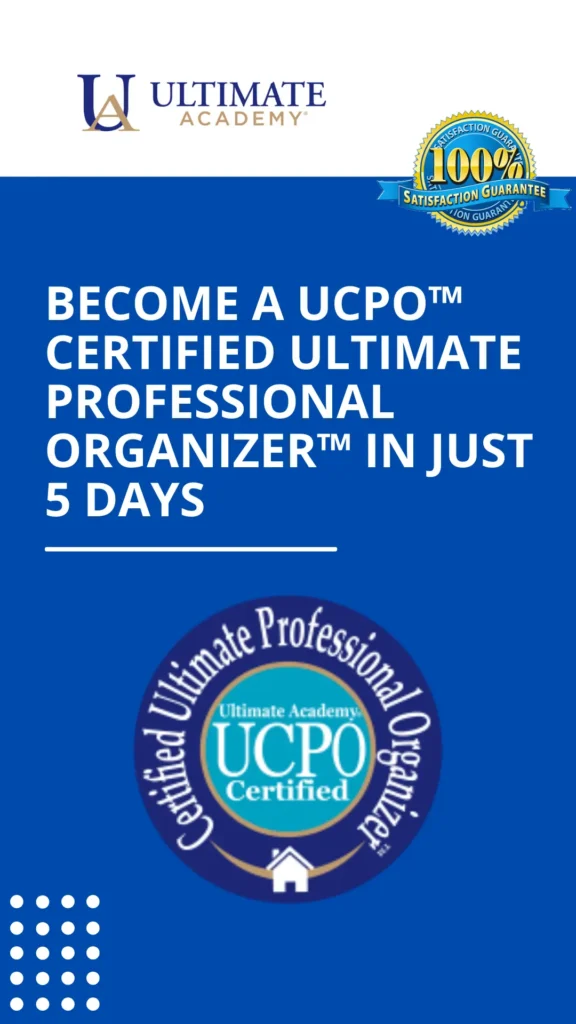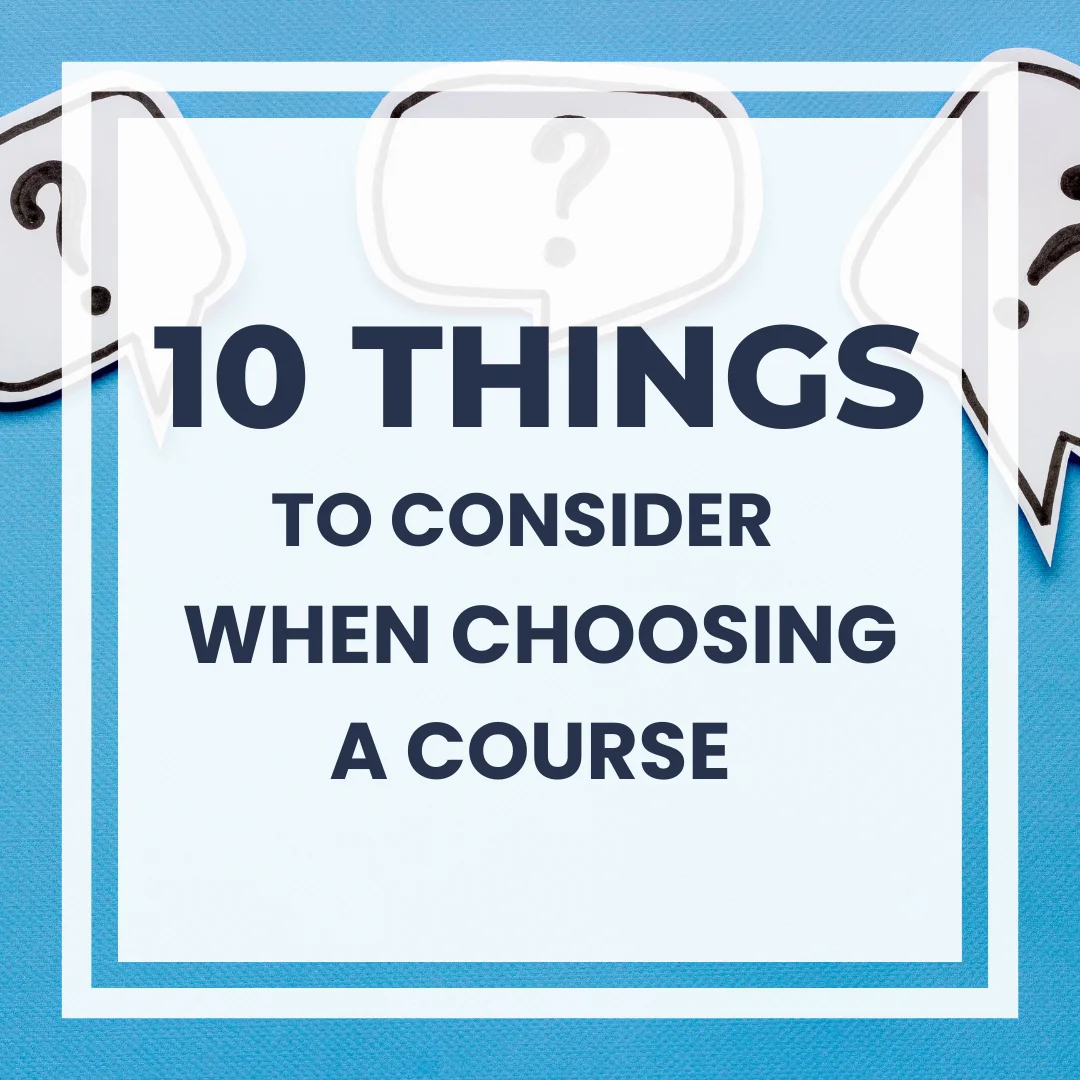Downsizing – Helping Your Clients Find Happiness in A Smaller Home

“Real happiness requires less than you think.” – Unknown
Remember when airline luggage allowances shrank from two hefty suitcases to one modest bag? This shift towards minimalism in travel mirrors a growing trend in homeownership: downsizing. Much like choosing what to pack, deciding what to keep when moving to a smaller home can be a challenge.
Yet, it often leads to a surprising realization: less really can be more. This blog explores the art of downsizing, offering insights on how you, as a Certified Ultimate Professional Organizer™, can guide clients through this transformative journey while differentiating yourself in the market.
The Need for Downsizing
By 2024, it is expected that 1 in 5 Canadians will be over the age of 65, with a life expectancy of an additional 20 years. And while many of these individuals plan on staying in their current home as long as possible, 76% of those who plan to move, expect to purchase a replacement primary residence.
According to Mustel Group and Sotheby’s International Realty Canada’s, ‘2020 Generational Real Estate Trends Report: Aging in Place’, of those who plan on moving, 54% expect to move into a condominium, aka, a much smaller home.
These seniors “are most likely to be motivated by the desire to downsize into a smaller home due to concerns that their existing one will be too large as they age”. This is followed by concerns regarding the home’s maintenance, as well as its physical layout.
The Downsizing Services You Can Offer:
As a Professional Organizer, you have an opportunity to specialize in this sector of the industry.
As the Canadian population ages and lives longer, the role of an Organizer becomes increasingly vital. For many seniors, downsizing is a necessary step, and they rely on professionals like you to manage the process of creating a smaller, yet equally comfortable version of ‘home’.
Downsizing can be emotionally and physically challenging. Living in a home for years leads to an accumulation of possessions and memories, which require understanding, compassion, and organization.
As a Professional Organizer, your caring, positive attitude can help your client avoid the stress and overwhelm often associated with downsizing.
Pre-Move Preparation Services:
- Decluttering and Sorting: Guide your client through deciding what to keep and what to give away.
Example: Help Mrs. Johnson choose which keepsakes to keep from her 30-year collection. - Space Planning: Know the size of the new home to decide which items to move. Ensure there’s enough storage space.
- Organization and Packing: Offer packing services, including providing materials.
- Dispersal Planning: Coordinate the auctioning, donating, or recycling of items.
Example: Arrange for Mr. Smith’s antique furniture to be auctioned off. - Logistics Coordination: Handle the details like hiring movers, canceling utilities, and organizing trades for repairs or renovations.
- Cleaning and Staging: Offer cleaning services and, if certified, stage the home for sale.
Example: Stage Ms. Rodriguez’s home to highlight its spacious living room
Move-In Day Services:
- Supervise the moving process.
- Assist with unpacking and setting up the new home.
- Provide emotional support on this significant day.
- Manage the disposal of packing materials.
- Ensure the old home is clean and ready for new owners.
Post-Move Services:
- Design customized organizational systems.
- Organize closets, cabinets, etc.
- Establish routines to maintain organization.
- Offer additional decorating and design advice, if certified.
How You can Stand Out:
Standing out from the competition is critical to your company’s success. How can you accomplish this?
Diversify Your Services: Offer additional services like Home Staging, Feng Shui, and Decorating & ReDesign.
Extraordinary Service: Go beyond your competitors in service quality.
Specialization: Focus on a niche, such as downsizing for seniors.
Powerful Offers or Guarantees: Create compelling offers that are hard to refuse.
Build Relationships: Develop strong, long-lasting relationships with your clients. Example: Regularly check in with clients like Mr. and Mrs. Gomez, who appreciated your help during their move last year.
In conclusion, downsizing is not just about moving to a smaller space; it’s about optimizing and personalizing the new environment. Like travelers who learn that packing light doesn’t diminish the joy of the journey, your clients will discover that real happiness requires less than they think. With your help, they can embark on this new chapter of their lives with excitement and ease.
Frequently Asked Questions About Downsizing
Assisting someone with downsizing requires empathy, patience, and a systematic approach. Here are detailed strategies to help:
- Hire a Professional: For expert advice and support, consider enlisting a professional organizer, such as those trained by Ultimate Academy®. They offer specialized knowledge to streamline the downsizing process, making it more efficient and less daunting.
- Start Early: Encourage them to begin the process well in advance of any move. This allows for a thoughtful and less stressful sorting of belongings, enabling more deliberate decisions about what to keep.
- Create a Plan: Work together to create a comprehensive downsizing plan. This plan should detail which items are essential, which can be sold, donated, or discarded. Setting clear goals and timelines will make the process manageable and less overwhelming.
- Be Supportive: Be there to listen and provide emotional support. Downsizing often involves parting with items that hold sentimental value, which can be difficult. Your support can make this transition smoother.
- Focus on Essentials: Guide them in identifying items that are essential for their new lifestyle. This may involve selecting versatile furniture that fits smaller spaces or downsizing personal collections.
Effective downsizing solutions are tailored to individual needs, incorporating strategies that maximize space and functionality. Here are some effective approaches:
- Digitize Memories: Encourage converting physical photos and documents into digital formats, which preserves memories without taking up physical space.
- Furniture That Fits: Select furniture that is scaled to fit the smaller living area. Multifunctional furniture can provide added storage and flexibility.
- Storage Solutions: Recommend utilizing vertical space for storage, such as shelving units, and opting for furniture with built-in storage to conserve floor space.
- Sell or Donate: Facilitate the sale or donation of items that won’t fit or aren’t needed in the new space. This not only declutters the home but can also provide a sense of giving back.
- Rent a Storage Unit: For items they’re unsure about, renting a storage unit temporarily can provide a buffer to make final decisions without rush.
The decision to downsize is a deeply personal one and can be influenced by a variety of factors beyond age alone. While it’s common for individuals to start considering downsizing during their late 60s to early 70s, typically aligning with the transition into retirement, there’s no one-size-fits-all age for making this move.
For some, the choice to downsize comes as early as their 50s or 60s, driven by the desire for a simpler lifestyle, lower living expenses, or the appeal of living in a community with peers. Financial considerations, such as the desire to reduce the costs associated with maintaining a larger property or to free up equity for retirement, can also play a significant role.
Conversely, others may opt to remain in their family homes well into their later years, only choosing to downsize when the demands of property maintenance become too burdensome or when health-related issues necessitate a move to a more manageable living space or a facility that offers additional care services.
Furthermore, life events such as the loss of a spouse or partner, changes in mobility, or the desire to be closer to family members, particularly grandchildren, can influence the timing of the decision to downsize.
Ultimately, the most appropriate age to downsize is contingent upon an individual’s specific circumstances, including their health status, financial situation, personal preferences, and life goals.
The process of downsizing can represent a significant life change, offering both challenges and opportunities, and thus requires careful consideration and planning to ensure that the move aligns with one’s overall vision for their later years.
Deciding to downsize upon retirement is a personal decision influenced by various factors, including financial considerations, maintenance concerns, and lifestyle preferences.
If a larger home no longer suits your lifestyle or if the upkeep is becoming too challenging, downsizing can offer a simpler, more manageable living situation.
Evaluate your needs, health, and future aspirations when considering this decision.
- Seek Professional Help: A professional organizer can significantly ease the downsizing process. They offer structured guidance, help in making tough decisions, and organize the logistics of the move, ensuring a smooth transition to a downsized lifestyle.
- Inventory Your Belongings: Take stock of all your possessions to understand what you have and identify rarely used items.
- Measure Your New Space: Knowing the dimensions of your new home will help ensure your furniture and belongings will fit appropriately.
- Let Go of Duplicates: Prioritize keeping only necessary items, especially duplicates in kitchenware and linens.
- Gift Items Now: Consider gifting special items or heirlooms to family and friends now, rather than waiting.














